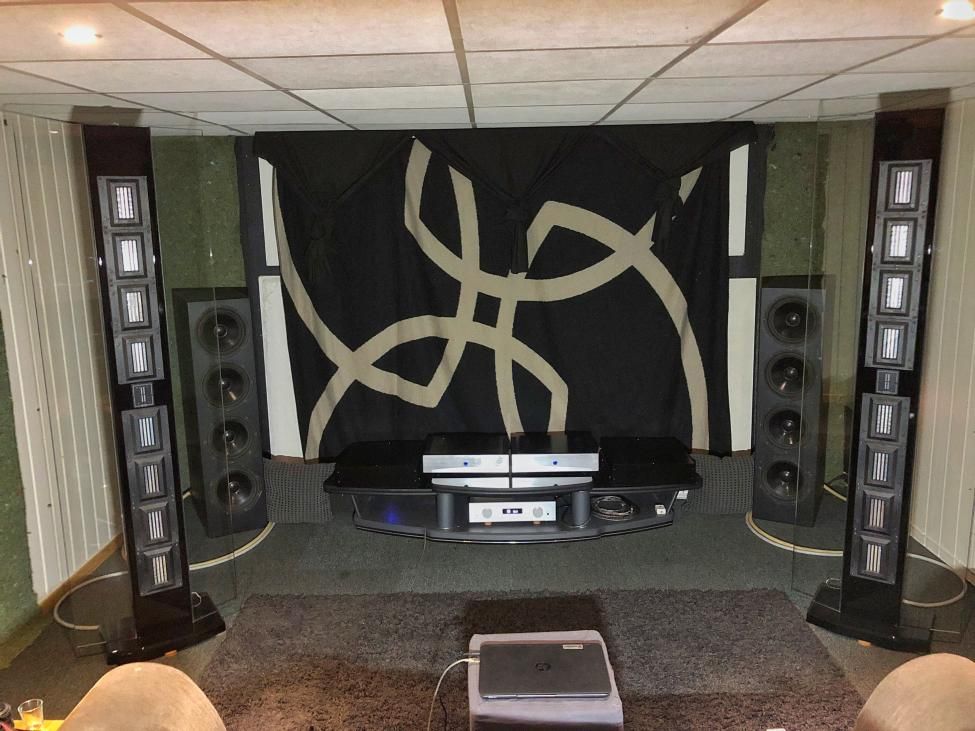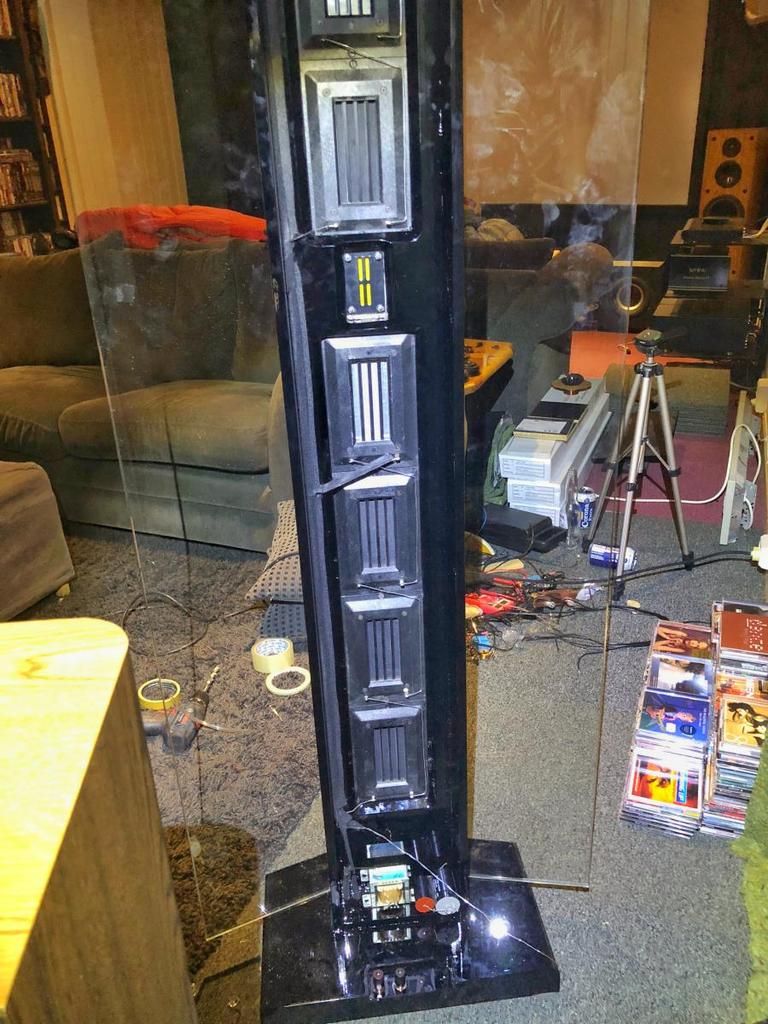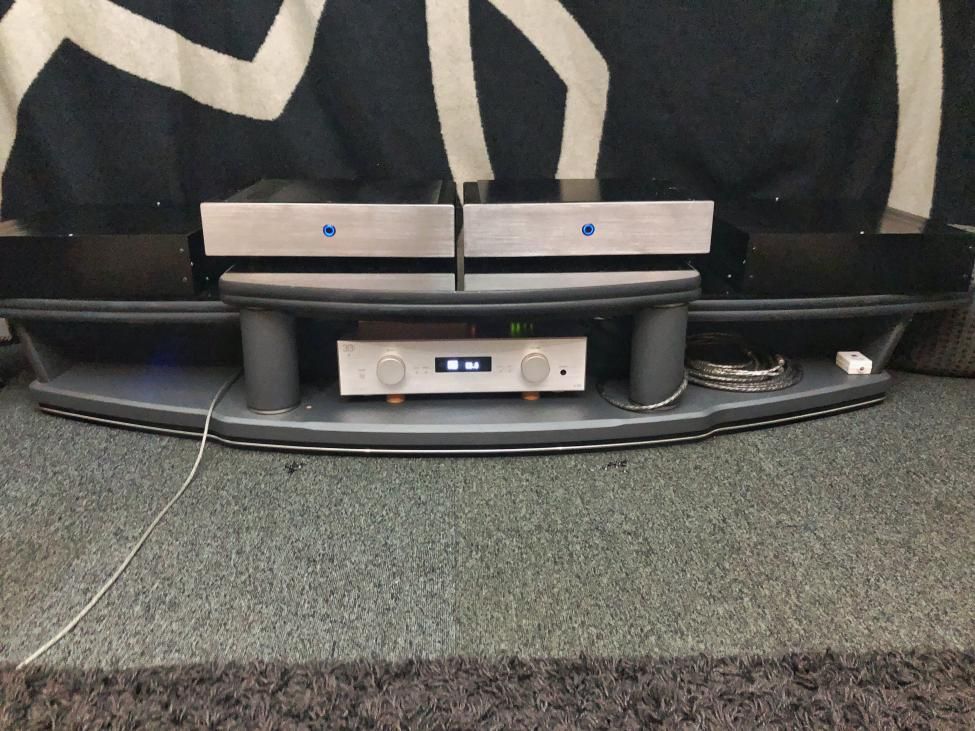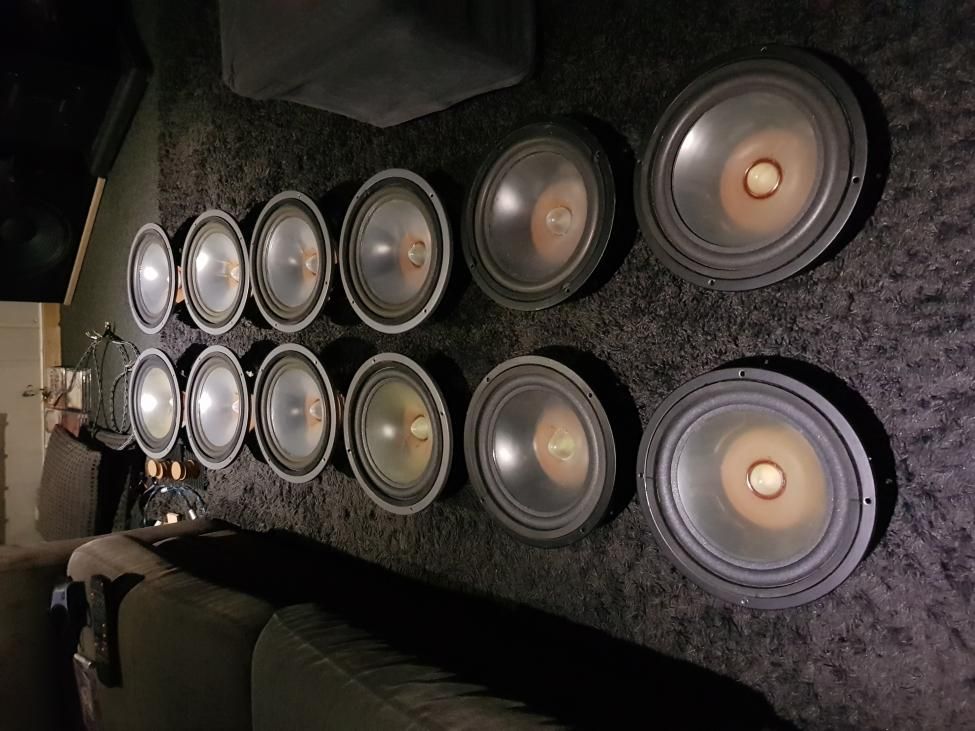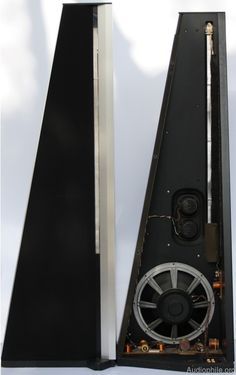
Line arrays or Column speakers have been around for a long time. They handle more power, put out more level with lower distortion and can control off axis emissions, better. The human ear/brain integrates the sound so anomalies created by different very short arrival times don't compromise the sound. Whether the baffle is narrow like a full range IDS or wide and tall like a XR 290 it depends on the choice of drivers, crossover, and layout design as to the success of the design. Really tall designs allow you to stand, sit, lay prone and enjoy the same sound. The longer the array the the less interference from floor and ceilings, vertical off axis energy is reduced. The increased Q or directional coefficient allow the sound to travel further with less loss, too. With a point source speaker the direct sound level drops 6 db every time you double the distance until the reverberant field becomes the dominant sound. The line array is closer 3 db and there for has less output loss. But as the sound is much more directional the reverberant field will have less of an effect and not support the out put level as soon. So there are a lot of variables as to which system will be louder with the same power. But for sure the line array will have a more intimate sound, similar to a horn system, but with out all the resonant horn quality. Line arrays brought very low distortion sound reproduction to our homes using fairly conventional drivers without using todays very expensive cone materials back in the late 70's. Magnepan are bi directional line arrays and the rear emissions can make or break a system depending on what is done with the rear emission. My favorite line array is the XR290, it is tall, but wide, too. It was designed to be used close to a rear surface where the wall and the enclosure became one ultimately wide baffle supporting frequencies in the lower midrange on down, so reflections didn't cause dips in the response, you get when pulling enclosures away from from surfaces. Standing waves are always an issue but the directionality of a line array reduces them in the frequencies produced by the mid and high freq drivers. I don't like to sit right next to speakers, I want space and yet to maintain definition, too. Fortunatly we deal with very short reverberation times which allows us some freedoms in homes to place speakers that can't be used in large spaces. So for the lowest distortion, with high out put and controlled dispersion to reduce room effects you want line arrays. Un fortunately, they are not efficient for consumers, yet, so do require ampled power just like point source speakers.
Stack 10 Altec 511or 811 B horns with 802 drivers and make a line array , with 6 515's stacked in a custom column and then bi amp. 106 db 1 watt 4ft with 300 watts for the horns = 130 db, and with the high output 515 that would be 900 watts 101 db ported 4ft or about 130 db. And really as Paul was to have said all you would need would be 10 watts for the horns and I would say about maybe 40 watts for the woofers. Lets see if you used 2 817 enclosures with 4 woofers, That would be 106 db 4 ft1 watt or about 133 db for the woofers and only 10 for the woofers for concert level.. Now buying amps with 124 db signal to noise becomes important. But what do you do for frequencies below 40 HZ where stacked 817 are already rolled off about 3 to 5 db. I know stick them in a corner or for a bit less against a wall. I saw 12, placed in two corners, - 816 enclosures with 421's with an extra gasket to prevent cone from hitting the woofer horn baffle put out 32 hz at 124 db at 100 ft distance at an Altec seminar where Stanel Sound was providing us a presentation of a Neil Diamond concert, featuring "Coming to America" they had recorded live.
If you attend live concerts now days almost everyone uses line arrays. .The Grateful Dead's wall of sound was just a series of line arrays stacked to gether to form a wall. Each instrument had its own dedicated electronics and Mac amp connected to a line array column of mostly Lansing speakers.


